Advertisement
Teachers Reclaim Their Artistic Souls With 'Those Who Can, Teach' Exhibit At Nave Gallery
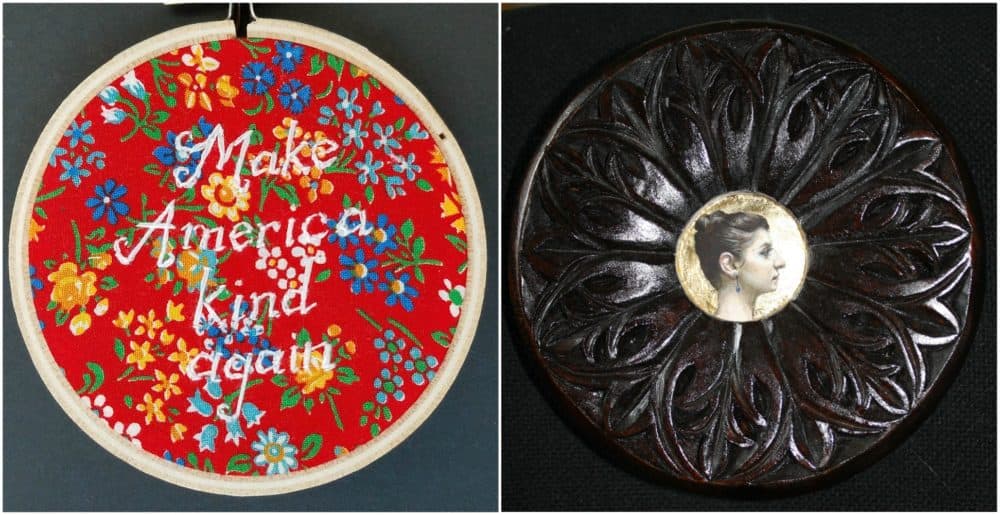
When Elizabeth Menges graduated from art school at Boston University a decade ago, it was considered “selling out” to wind up in a regular job that might pull you away from your studio practice.
“The mentality was that your art is your work,” she recalls of that time. “Nothing else matters. And I thought, ‘Well, I need to support myself.’ I'm a Type A person. I don't go with the flow and see what kind of income I have from one week to the next.”
Like most of us, she wanted a regular, reliable income that might allow her to shelter herself, eat more than just Ramen noodles and buy enough heating oil to get through a New England winter.
So Menges ended up teaching. And she likes teaching. She currently teaches art at Cambridge Rindge and Latin School with colleagues Amanda Kilton, who teaches Foundations of Art and Painting, and Melissa Chaney, who teaches AP Art.
But like any artist with a full-time job, Menges quickly discovered that it’s not necessarily easy to find time to get into the studio, where she is particularly adept at creating wonderfully expressive portraits of friends and family and also cheeky embroideries, life-size semi-nude portraits, and oil and acrylic paintings touching on themes such as marriage, motherhood, breast cancer, her Cypriot heritage and life as a twin. (Menges herself is a twin.) Lately, with a 5-month-old infant on her hands, Menges has found even less time to pick up a paintbrush.
In the midst of balancing her job as a public school teacher with family and her studio practice, Menges, along with colleagues Kilton and Chaney, hit on a bright idea: Why not curate a show dedicated to all those artists out there who also teach in our schools, from kindergarten all the way up to high school? It would be a way of showcasing the work of those early art mentors who work mostly behind the scenes while encouraging their students to plumb the depths of their artistic souls even while their own artistic souls get neglected.
Advertisement
“Those Who Can, Teach” is the exhibit they came up with, featuring the art of nearly 40 teachers, most of whom teach in area public schools. The exhibit, opening Nov. 17 and running through Dec. 15 at the Nave Gallery in Somerville, explores a range of artistic production, including both abstraction and figuration, painting and drawing.
Jessica Beck teaches Elementary Art in the Lynn Public Schools and is showing “In Bloom,” a pen and ink silhouette of a blooming tree that deftly balances abstraction and figuration.
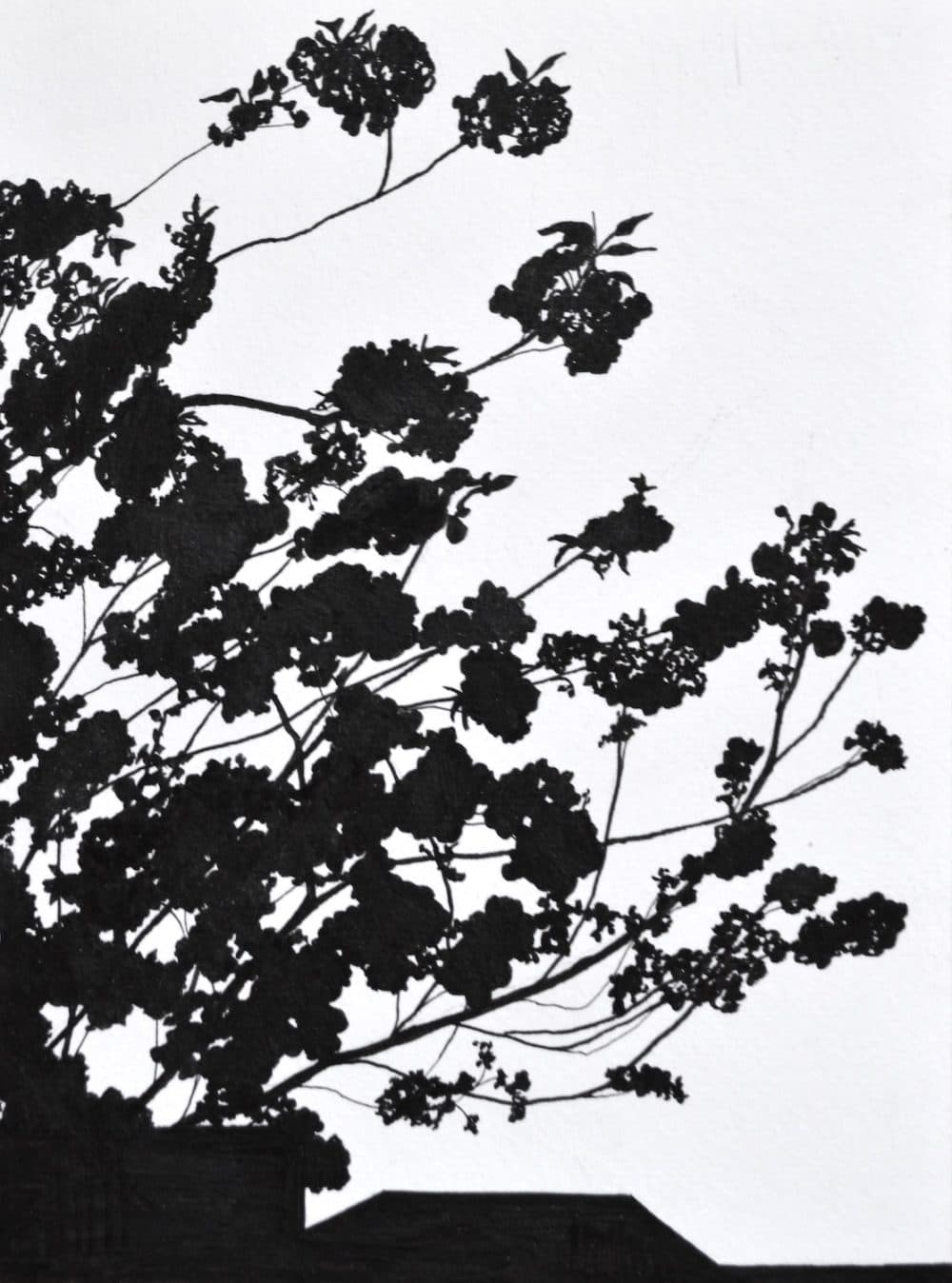
Nikki McCulloch teaches at Arlington High School, but on her own time does bold acrylic and watercolor abstracts inspired by nature that emphasize mark-making, gesture and color. Her piece, “Highland Skies #1” seems to revel in chance and spontaneity.
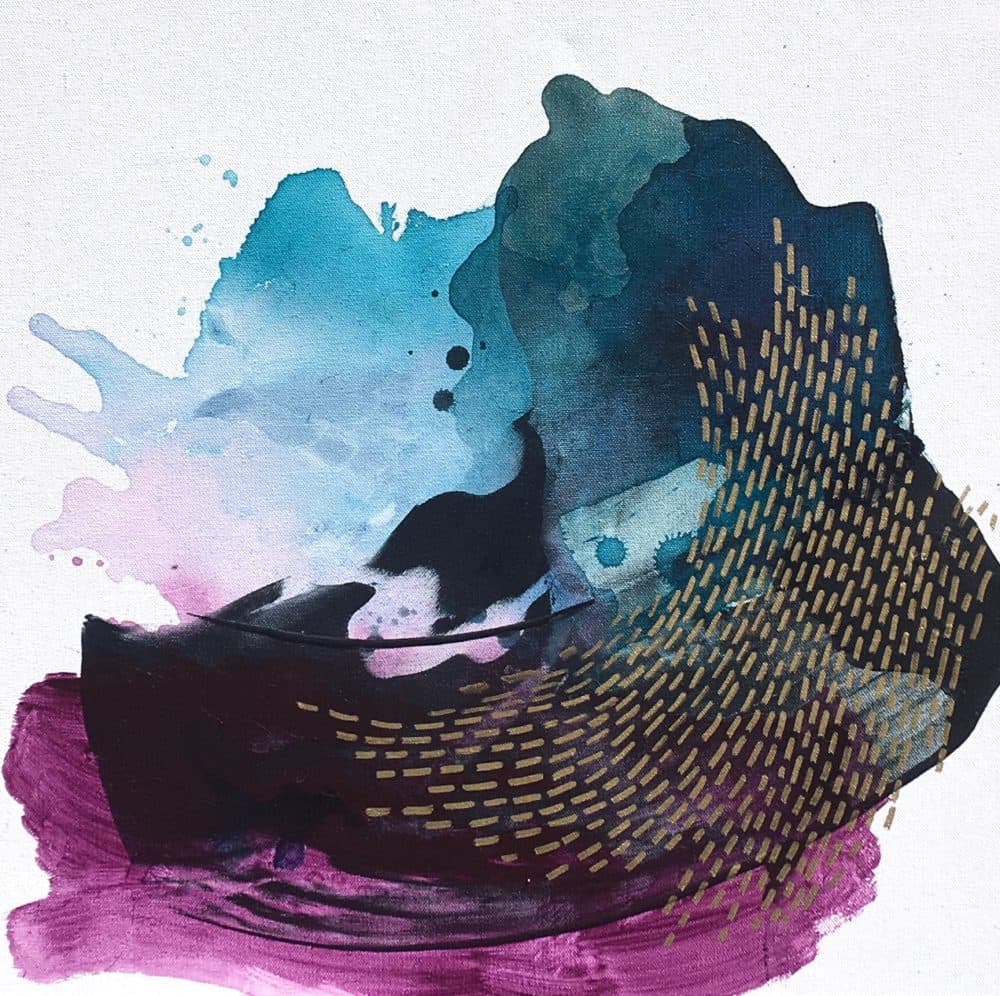
Benjamin Sears is a teacher at Amherst Regional High School who does dark, densely-packed neo-surrealist abstract oils. He’s showing “Capacity Crowd,” a charcoal and acrylic ink drawing of a theater that is ghostly, mesmerizing and perhaps slightly disturbing.

“It's different for each person,” says Menges, of the challenge of balancing teaching with art-making. “But the most difficult part is you're teaching people to do the things that you love and you might not have the energy left for you to do it. When I started teaching, I was told that I wouldn't be making any of my own work for like five years or something like that. It was like a death sentence for my own artwork and obviously I didn't like that idea.”
Fortunately, it wasn’t exactly a death sentence, but it did call for a strategy — and most of the artists exhibiting in the show have developed one.
“All teachers will tell you that finding a balance between their teaching practice and everything else in their life is challenging and everyone finds their little habits or routines that make it work for them,” says Kilton. She spends an hour each day working on a project, often working in a sketchbook where she plots out long-term projects. She also takes a class or workshop every year just to keep the art juices flowing.
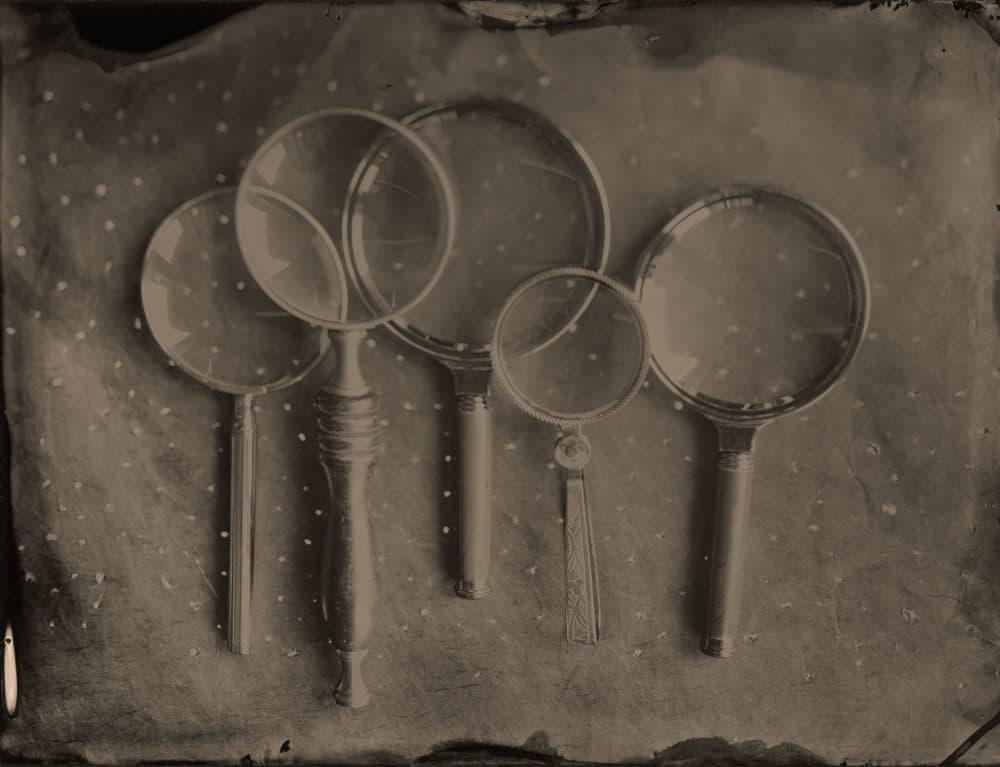
“It's always interesting and helpful to see how someone else approaches teaching different materials,” she says. “Also, it forces me to make time to create.”
Chaney takes classes as well when she finds time and submits to calls for art for various shows which gives her deadlines to meet. She also makes a habit of checking in with other artist-teacher friends from time to time.
“We remind each other how hard it can be and set goals for sharing work,” she says.

And there are other strategies. One teacher who submitted to the show explained how she used her children’s toys as subjects for still life paintings. Another explained how she managed to incorporate her own artistic interests into the school curriculum (Menges, for example, teaches a portrait class) and another works after hours using the classroom as a working studio. Still another explained how she made it a habit to go to her studio first thing every morning for three hours.
“She must live close to work, and I’m assuming not have small children to take care of in the morning,” Menges says wryly.
The show curators originally put out a call for work of only public school teachers but got so many submissions from private school teachers that they dropped that restriction. While they first imagined showing teachers only in the immediate Boston area, they got enough entrants that they broadened that out, too.
For Menges, working small has been one way to stay active as an artist, while making less of a time commitment. In art school, she was encouraged to paint huge but now she makes much smaller work that can adapt to the space and time she has to create it.
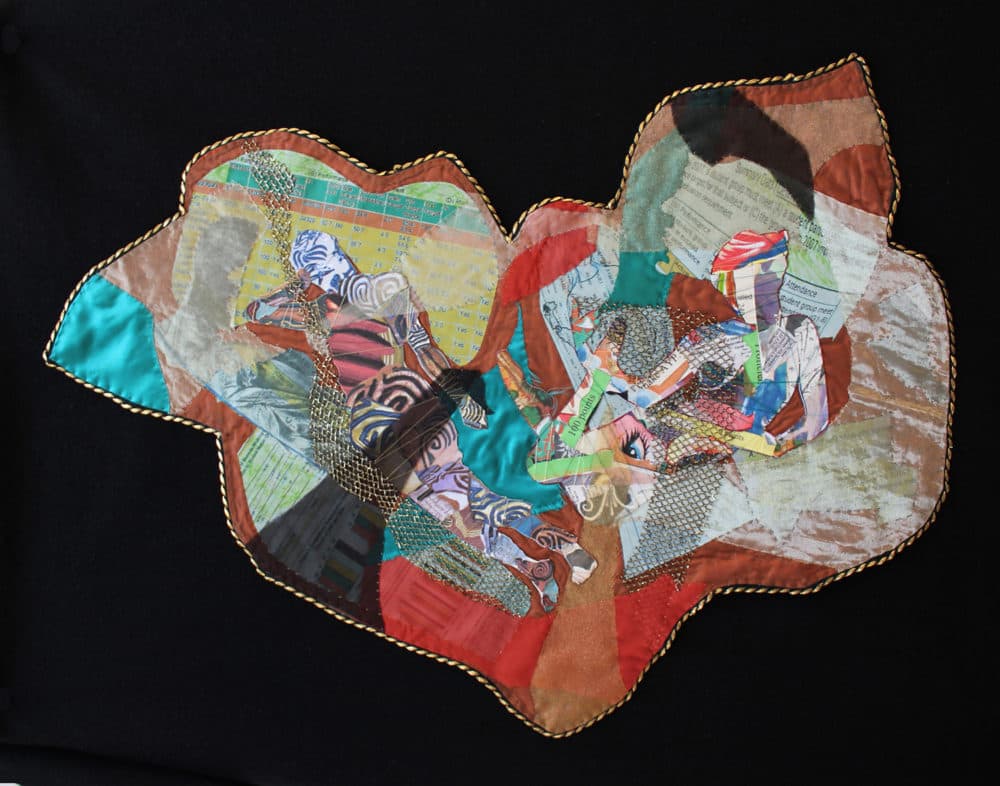
Some of the most common lessons artist-teachers can teach, Menges heard from those participating in the show, is that teachers cannot be hypocritical — if they ask students to risk and experiment, they should be willing to do so themselves. Art teachers spoke about the continual need to balance rules and creativity, and many art teachers reported that their students’ work had an influence on their own work.
“A lot of them also said that their teaching process and art making process are similar as far as you're sifting through all of this stuff and you have to refine and distill and figure out what's important — how to pace it, how to problem solve, how to revise, how to keep going when you're frustrated,” says Menges.
With the Nave exhibit, Meneges wanted to demonstrate that that old adage, "Those who can't do, teach," isn't true.
“If you can do something, you teach it. That's the best gift you can give. Because you're helping others learn what you can do… Just because you're a teacher doesn't mean you can't also practice what you preach.”
"Those Who Can, Teach" is at the Nave Gallery from Nov. 17 through Dec. 15. The gallery is open Saturday and Sunday from 1 to 5 p.m. and is located in the Clarendon Hill Presbyterian Church, 155 Powderhouse Blvd., Somerville.
